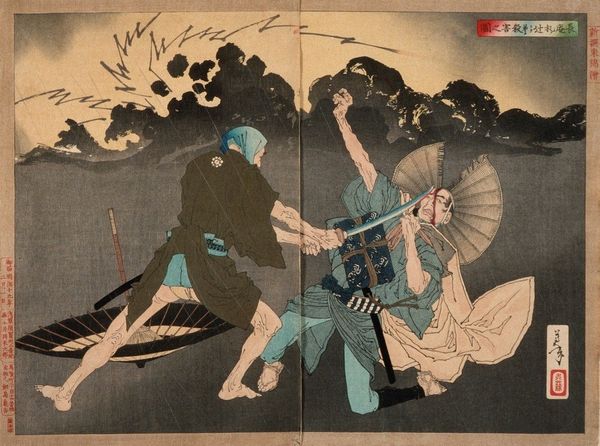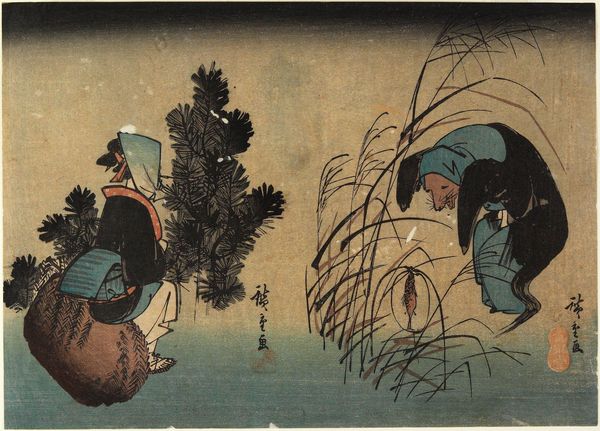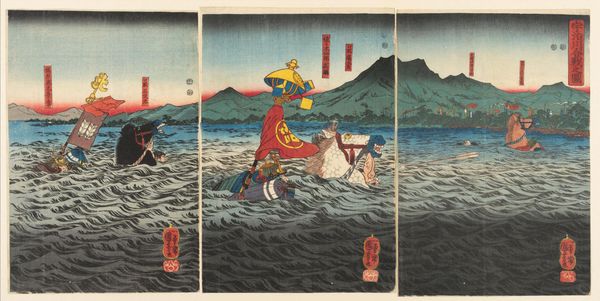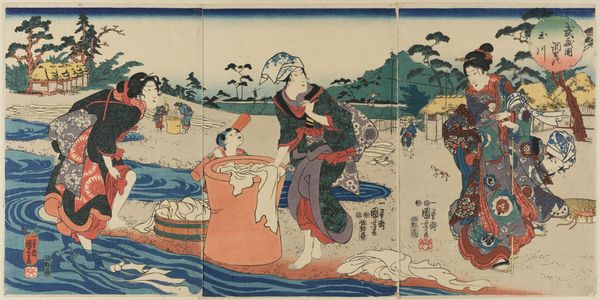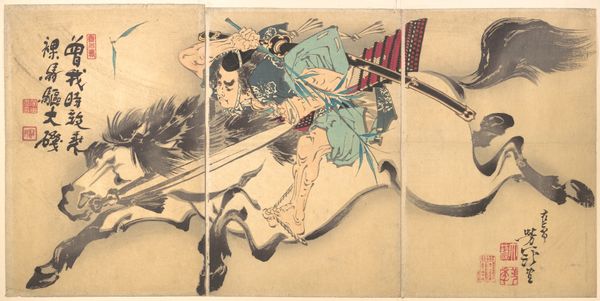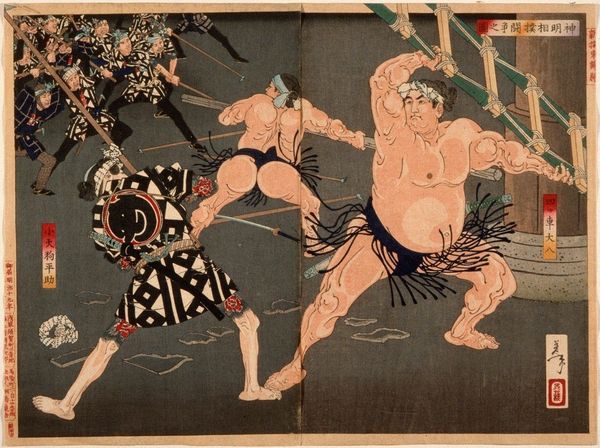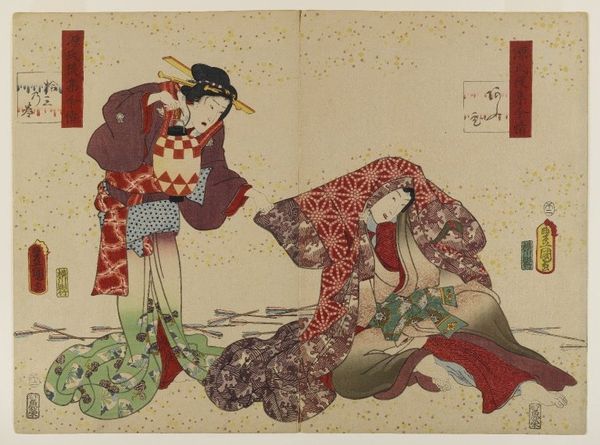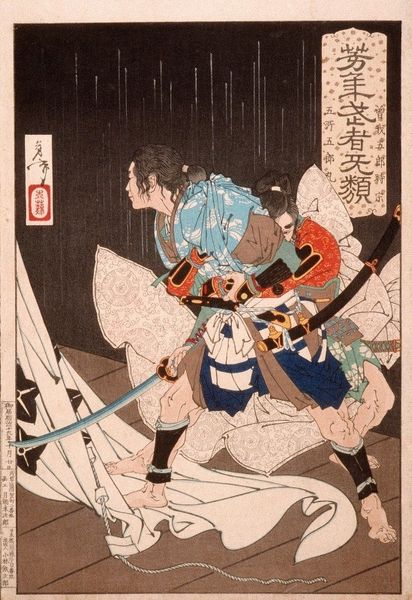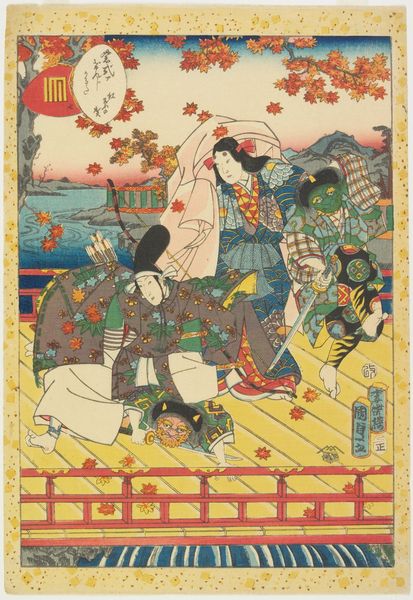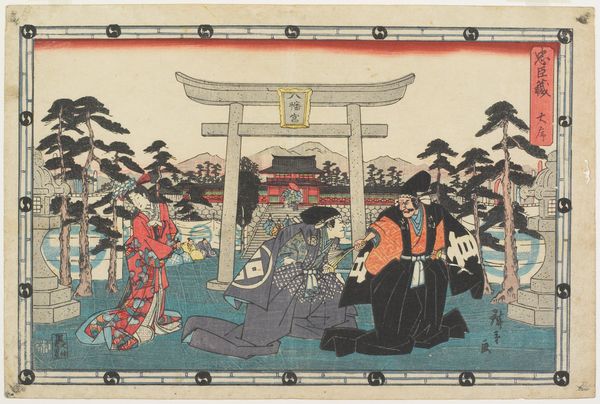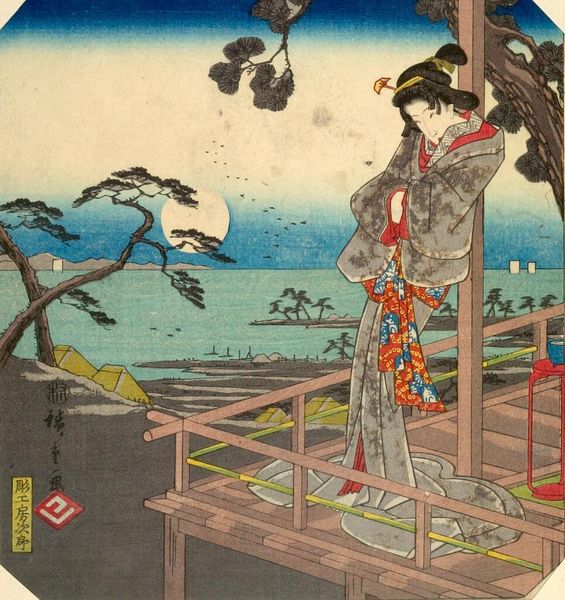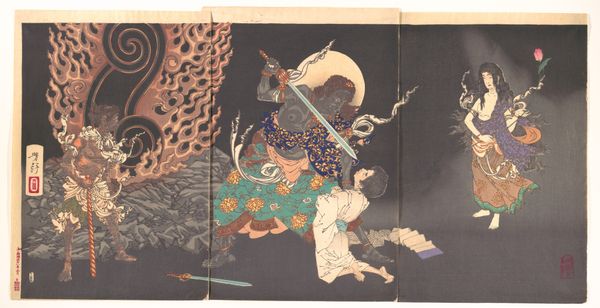
Copyright: Public Domain: Artvee
Curator: Welcome. Here we see Tsukioka Yoshitoshi's woodblock print, "The Priest Daijin Murders Umegae," created in 1886. Editor: A powerful and disturbing image, to be sure. The diagonal composition, with the bodies locked in conflict against the swirling waters, immediately conveys violence and chaos. Curator: Indeed. Note the meticulous detail in the patterns of Umegae’s kimono, sharply contrasted with the relative simplicity of Daijin’s garb and musculature. These visual elements establish a dialogue within the overall pictorial space. Editor: I’m immediately struck by the socio-political undercurrents here. The work critiques power, violence against women, and abuses within religious institutions. The brutal act, depicted with unflinching honesty, challenges patriarchal structures. Curator: And technically, the work showcases Yoshitoshi’s masterful understanding of woodblock printing; his nuanced shading and line work create a profound sense of depth and realism, almost unheard of at the time. Consider, too, the interplay between the negative space and the figures, drawing attention to the key struggle between the characters. Editor: It's crucial to also note Yoshitoshi's place in Meiji-era Japan, where traditional values collided with rapid modernization. He often depicted marginalized people within that specific social context, creating what we would now consider politically charged art. This print challenges idealized norms. Curator: From a formal perspective, the flat, decorative elements contrast with the three-dimensional rendering of the figures, highlighting the push and pull between tradition and innovation. Editor: Absolutely, and Yoshitoshi, by challenging such cultural norms, gave a voice to the voiceless, fostering conversation around these urgent social issues and challenging us to see these stories today with open eyes. Curator: This is a striking demonstration of visual artistry that marries formal mastery with powerful historical implications. Thank you for joining me on this exploration. Editor: Thank you; it's works like this that force us to question how gender, power, and representation operate in art and in the wider world.
Comments
No comments
Be the first to comment and join the conversation on the ultimate creative platform.
